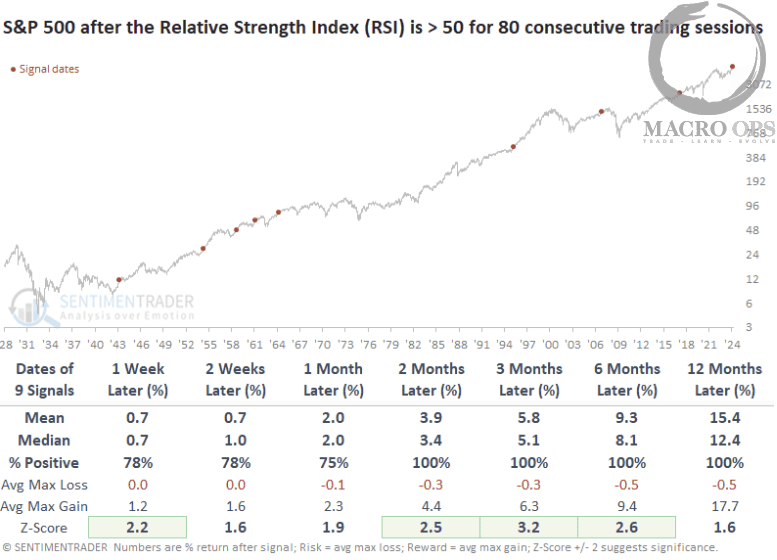An alternative title for a trader is “professional uncertainty manager.”
Trading is a business of possibilities, not certainties. Despite our best efforts to predict financial markets, we’ll inevitably be wrong time and time again. Many of our bets will lose purely due to bad luck or unforeseen circumstances. It doesn’t matter if they were objectively good bets.
Professional gamblers make for great traders because they too live in a world of managed uncertainty. A pro poker player knows that pocket Aces are statistically likely to beat pocket Kings 83% of the time. He’ll take this bet any day of the week. But he also knows that despite his advantage, the player with Kings can still get lucky and win. The pro will make this bet (the right bet) but still lose 17 times out of 100. He’s fine with that.
Trading is a similar game. We want to risk capital when the odds are in our favor. The goal is to continuously place positive expected value (EV) bets. If a bet has positive expected value, it means that over time placing it again and again will result in net profits. The outcome of any single bet may be negative, but that doesn’t matter. The net profits at the end are the focus.
Calculating Expectancy
There are two components used to calculate whether a bet has positive expectancy. The first is the probability of the trade being successful. The second is the ratio between your profits if you’re right versus your loses if you’re wrong. This is called the risk/reward ratio.
The full EV equation is below:
EV = (Probability of Winning) x (Amount Won if Correct) – (Probability of Losing) x (Amount Lost If Wrong)
Let’s say we think there’s a 50% chance USDJPY rallies over the next 3 months. We set stops and targets so if the trade goes our way we win $1000, and if it hits our stop we lose $500. The expected value of this bet is:
EV = (50%)*($1000) – (50%)*(500)
EV = $250
On average this bet should earn us $250 over time, which means we should absolutely take it.
Now what happens after placing this bet is up to the market gods. We have no control over the outcome. There are many unforeseen factors that could derail the trade, but if our original probability and payoff estimates are correct, this same trade will eventually result in net profits when continuously repeated.
This EV framework also reveals that a trade doesn’t need a high probability of winning to make you money.
Let’s say you think there’s a 20% chance that all hell breaks loose and the S&P 500 falls 30% over the next year. The trade in question is buying a put option that costs $10.00. If you’re wrong, you lose the premium in the put. But if you’re right, the put will appreciate to $80.00.
EV = (20%)*($70.00) – (80%)*($10.00)
EV = $6.00
This bet is still expected to net you $6.00 despite a win rate of only 20%!
The math here is why every single trading book says to “hold your winners and cut your losers.” By designing asymmetric trades like the one above, where you win a lot if you’re right and lose very little if you’re wrong, you greatly lower the bar on how often you need to be correct. You can have a profitable process with a win rate of only 30%.
We value all market opportunities through this expectancy framework. Some trades may be unlikely to work in our favor, but offer enormous gains if correct. Others may offer a modest payout, but have a much higher probability of winning. Either way, we’ll consider at a trade as long as it has a positive EV.
Bayesian Analysis
Calculating EV before placing a trade is crucial. But it’s important to remember that markets are a continuous event, not a discrete one. This means that expected probabilities and payoffs change as time passes. Going back to the poker example, AA vs KK pre-flop is great for the guy with AA. But if a King shows up on the flop, the situation takes a 180 degree turn. Now the player with KK has a huge advantage in the hand.
Markets deliver the same kinds of twists and turns. New information is released and price action plays out. Each of these variables in turn affects the likelihood of us winning or losing.
We combat the changing landscape by embracing something called Bayesian analysis, which means we update probabilities and payoffs as new information becomes available.
Let’s say we’re short the market and the trade goes our way. But then the FOMC comes out with a dovish statement and the market rallies. This new information and subsequent price action would force us to re-evaluate the expected value of our short bet, possibly causing us to exit the trade altogether.
Bayesian analysis is also important in trading because the rules of the game can change.
The rules of a static game like poker always stay the same. A flush will always beat a straight. A pair of Aces will always beat a pair of Kings.
But in trading… anything goes.
Assets can trade well above and below their intrinsic value. Central banks can decide a currency is too strong and intervene in a moment’s notice. And on top of that, new innovations are constantly changing the way markets move. Back in the 70s and 80s markets exhibited an incredible amount of trending behavior, conducive to trend following strategies. But as markets modernized, charts became noisy and full of mean reversion and false moves. What once had positive EV in the past may not have positive EV today. Surviving markets means constantly monitoring and testing the EV of our assumptions and strategies in real time.
You don’t need a PhD in mathematics to succeed in markets, but you must have a handle on basic probability theory and the expected value equation. Otherwise you’ll be attempting to force certainty onto a system that is anything but…
If you want to learn more about our trading process, check out our 80-page Macro Ops Handbook by clicking here.








